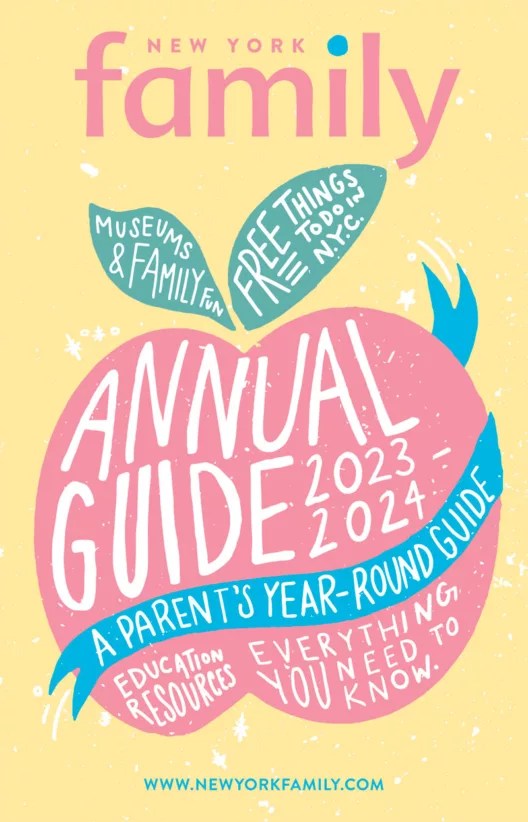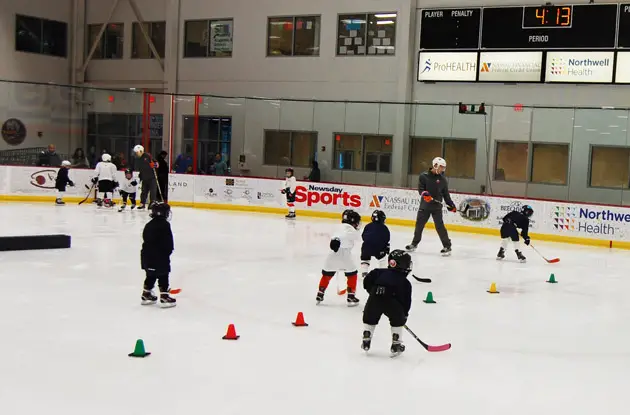Can we nurture our children, their interests, and their chances of Ivy League acceptance all at the same time? It’s possible to strike a balance among your child’s family time, play time, structured activities, homework time, and socialization. Here, some guidelines to follow.
One of the ways it’s gotten more complicated to be a parent is the vast array of extracurricular activities offered to school-age children. We want our kids not only to do well academically but to develop their talents and passions, and test themselves in competitive sports and games. And, let’s face it: We want them to look like well-rounded, accomplished kids to college admissions committees. But we also don’t want to run them ragged or turn them into stressed-out automatons.
If you run a Google search for “extracurricular advice” you may find, on the first page, hits for “Advice on Putting Together Your Application” from Yale University and “Nurturing Children’s Interests” from Good Housekeeping. Can we nurture our children, their interests, and their chances of Ivy League acceptance all at the same time?
For many contemporary parents the answer is “We have to!” The expectations for our kids have increased exponentially since what many of us think of as our own more idyllic childhoods, even if we may be looking at the past through rose-colored glasses.
“Letting kids be kids” isn’t an easy proposition anymore, particularly in an urban environment. “Times are different now,” says Rachel Cortese, M.S. Ed., M.S. CCC-SLP, a former New York City schoolteacher and speech-language pathologist at the Child Mind Institute in Manhattan. “While I think there are benefits to letting kids run around free, there are safety considerations that we didn’t have to think about 20 or 30 years ago.”
Cortese says after-school activities have stepped in to supplant the unsupervised “free time” we’re no longer comfortable allowing our children to have, and there is a consensus that younger children should have the opportunity to experiment with a variety of activities in well-delineated blocks—“structured free time,” as it is called. What used to be the time between “School’s out!” and “Dinner’s ready!” remade for the realities of contemporary life.
But what happens as children grow older and are introduced to and enthralled by extracurricular pursuits such as sports, music, and eventually clubs and student groups? How much should parents push their kids to engage—and how much is too much? And what about the increasing popularity of highly structured activities for younger and younger children? Every parent of a child no matter how old wonders if the balance they have struck between family time, play time, structured activities, homework time, and socialization is ‘correct.’ Is there an equation?
The Benefits
In general, Cortese says, “kids tend to do really well when they have structure, and part of that structure is having an after-school schedule.” Educational and learning specialist Ruth Lee, M. Ed., ET/P, also extols some well-known benefits of getting kids together outside of the classroom for more physical activities. “It gives kids social interactions,” she says, at the same time helping them “get out some of their energy so they can settle and go back to their work” after school. This is particularly important, she notes, as schools cut back on recess in order to focus efforts on preparing for standardized tests—about as far from kids running around free as you can get.
For older kids, as clinical psychologist Mary Rooney, Ph.D., says, after-school activities can be very important for protecting against more dangerous activities, particularly if parents are busy at work or with other children. “Once kids get into middle school and high school,” Dr. Rooney says, “the hour or two after school is the highest risk time for dangerous behaviors like substance abuse, because it’s the largest chunk of time when kids are unmonitored.”
And of course, more recreational activities outside of school, whether its sports or science, dance or theater, give kids another arena to demonstrate competence and mastery.
The Drawbacks
But what about the bane of modern childhood and adolescence, “overscheduling?” It is not to be taken lightly, says Susan Newman, Ph.D., a New York metro area social psychologist and author of, among many others, The Case for the Only Child. “With very young children you do want to let them dabble in a lot of things until they find what they are really interested in,” she concedes. But “with older children you can explain to them why it’s not a good idea, that if you are spreading yourself too thin you’re not going to be able to focus and get really good at one thing.”
This urge to cover all the bases, as it were, is bad for families. “Family is the most important thing you have,” Dr. Newman says. “You want to bond with your children, you want them to know that you’re always there, you want to build the sibling relationships, because as children become older and become adults these are the people they really rely on.” She has seen families drift apart because siblings were deeply committed to different soccer teams, dividing the parents’ attentions and leaving little space for a home life. Time, Dr. Newman says, is “the glue that keeps the family together.”
An overload of extracurricular activities also doesn’t bring the perceived benefit a lot of parents and kids are looking for: a good-looking college application. “What they’re really looking for is applicants who are well-rounded and have focus, you can see they are pursuing a goal and they really like what they are doing,” Dr. Newman says. “And not just dipping their hand in this and that and the next thing so they can fill out more lines on the application.”
Finally, Lee sees a particular danger for children who are struggling with learning disorders or behavioral issues. “Some children who have learning disorders don’t always have the best judgment when making choices” about commitments, she says. That, and the time needed for educational and other interventions, can lead to children being “overscheduled for specialists and for activities.” Her advice is to come up with a plan. “It’s important for parents first of all to set boundaries.”
The Balance
How to set the boundaries? First, understand that organized group activities aren’t the be-all and end-all of developmentally appropriate extracurriculars. And think ahead about what schedule might work for each individual kid.
The opportunities to socialize and gain competency are a great thing about extracurricular activities, Cortese says. But parents shouldn’t forget that children can also benefit from self-directed activities, albeit in structured blocks of time. In other words, don’t forget that in the mythical American pastoral of our past there was time for solitary introspection and experiment alongside autumn games of touch football. “Sometimes there’s not enough emphasis put on the importance of independent work time,” she says, “and giving kids the time and the place to think for themselves, be creative, and access their own internal resources.”
Lee understands that parents and kids alike get excited about the bonanza of possible activities without thinking critically about the whole picture. “A lot of people see a list of all the great things that are being offered,” she says, “and they sign up for everything and then they realize it’s so unrealistic with their time constraints and all the schoolwork that they have.” That’s not good—as Dr. Newman notes, it’s no fun for kids “to have so many things that they have to drop out.”
On the flip side, parents should realize the value of keeping children “busy to the point of getting into a routine that works well,” Lee says. And this is particularly good for kids who work better with a lot of structure, “especially kids who have learning disabilities.”
Is there a hard and fast answer? And how many activities are too many? “Seven,” jokes Jerry Bubrick, Ph.D., senior director of the Anxiety and Mood Disorders Center at the Child Mind Institute. But really, it’s too much when after-school activities start interfering with a child’s life. Dr. Bubrick notes that in the case of intensive commitments like sports or theater, even one activity can be too much. “These kids just disappear,” he says, which is unfortunate because these are also “great experiences.”
Dr. Bubrick has a pretty simple calculus for how much is too much: “Can you still do your homework? Can you still get 8 or more hours of sleep each night? Can you still be a part of your family? Can you still hang out with your friends? If the answer is ‘no’ to one or more of these, then it’s too much.” He suggests that sometimes multiple but less time-consuming activities can reduce the strain on a kid’s life while still conferring the benefits of extracurricular activities.
Back-to-School Boundaries
One thing that all five experts agree on pertains to the first move: yours? Nope: your child’s.
“Kids come to us with different predispositions,” Cortese says, and the best activity “depends on the individual child. Kids just respond better to different kinds of structure.” The same kid will also change over time. “Even if you have a set schedule this year, that might [change] next year depending upon a number of different variables in the kid’s life and the family’s life.”
And now, the most important and perhaps most difficult piece of advice to follow: Know your child. “If you take two kids and give them the identical school and after-school protocol, those kids might respond very differently,” Cortese continues. “One kid who is highly scheduled might do very well and another might need to dial it back.” The benefit of after-school activities is clear—but how frequent and how structured these activities need to be depends upon the child.
Or, as Newman puts it, “trust your child. Most children find their level and their interest if they have the time to do it. My advice to parents is always to understand your child and see what limits he or she has or doesn’t have.”
In Dr. Newman’s estimation, “everybody’s trying to raise a ‘star’ child, and in order to do so they are putting too much pressure on their children and definitely overscheduling them.” In other words, she says, “the parent has to be very careful not to be living out his or her dreams.” Instead, let’s remember that even though we aren’t living in the past, “giving kids the time and the place to just be kids is really important,” as Cortese says. And giving families the time to be families is important, as well.
Article reprinted with the permission of the NYC-based Child Mind Institute, which is dedicated to transforming mental health care for children everywhere by finding more effective treatments for childhood psychiatric and learning disorders, building the science of healthy brain development, and empowering children and their families with help, hope, and answers.
Also See:
Your Guide to After-School Activities for Kids in the NYC Area




















